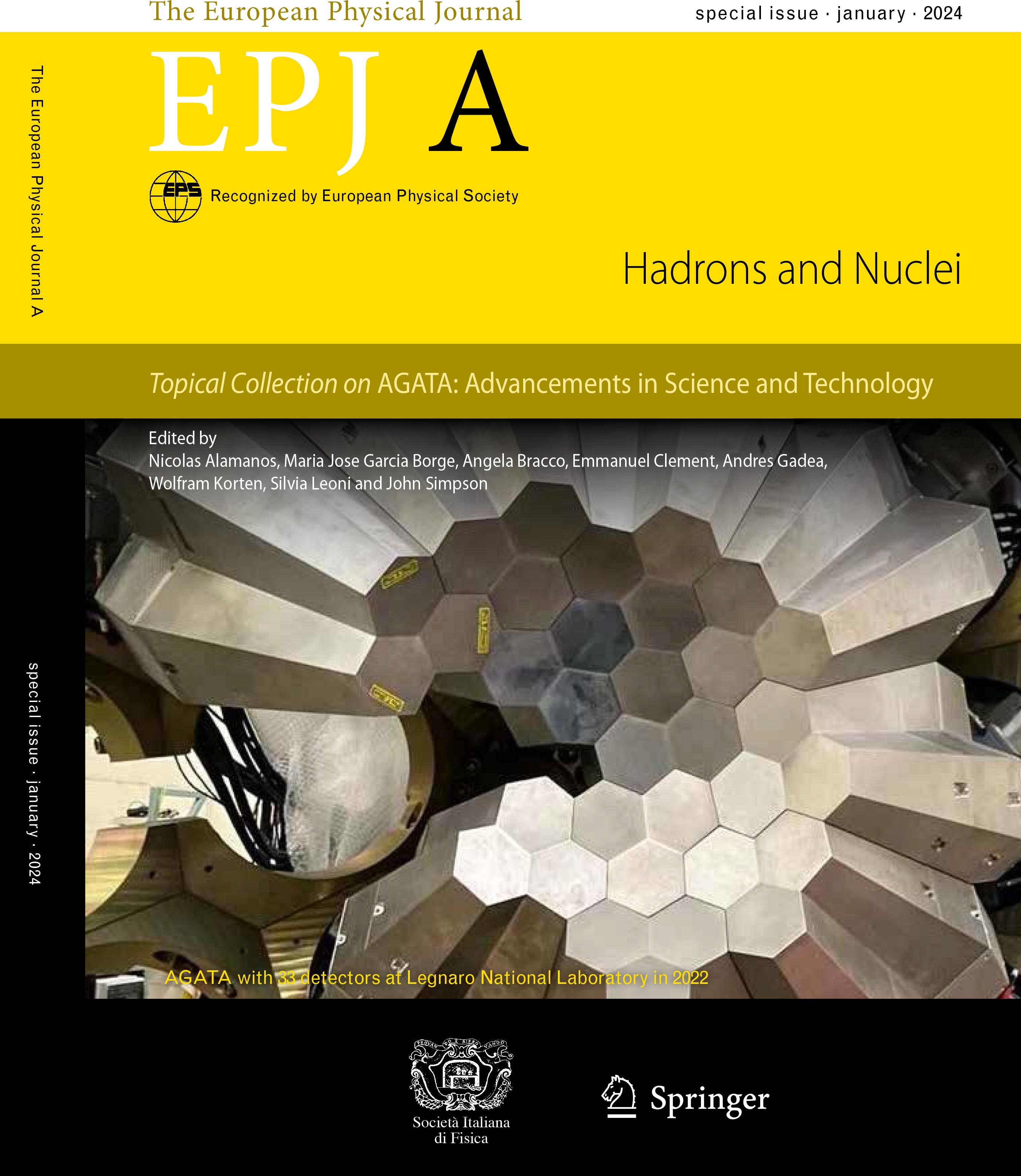EPJ A Topical Collection: AGATA: Advancements in science and technology
- Details
- Published on 24 January 2024

Guest Editors: Nicolas Alamanos, Maria Jose Garcia Borge, Angela Bracco, Emmanuel Clément, Andres Gadea, Wolfram Korten, Silvia Leoni and John Simpson
The Advanced GAmma Tracking Array (AGATA) is a major European project, involving over 40 institutes in 12 countries, to develop and operate a high-resolution gamma-ray tracking spectrometer. Gamma-ray tracking requires the accurate determination of the energy, time and position of every interaction as a gamma ray deposits its energy within the detector volume. This is achieved by using electrically segmented hyper pure germanium detectors, pulse shape analysis of the digitised signals, and tracking algorithms to reconstruct the full event. The AGATA 4π geometry comprises 180 tapered-hexagonal coaxial detectors. AGATA can measure gamma rays from 10’s of keV to 10 MeV with excellent efficiency and position resolution and has a very high count rate capability. These features result in an instrument with a resolving power of two orders of magnitude larger than previous spectrometers, such as EUROBALL in Europe and Gammasphere in the USA. A similar tracking spectrometer is being constructed in the USA, called GRETA.
AGATA started in 2003 with a research and development phase to realise the technical ingredients needed to perform tracking. The first science campaign was in 2009–2011 in Legnaro National Laboratory (LNL) followed by campaigns at GSI (2012–2014) and GANIL (2015–2021). During this period the number of detectors gradully increased to 60, which cover 1/3 of the full 4π geometry. In these campaigns AGATA was used with many complementary detector systems. These included spectrometers for reaction product identification and selection, charged particle and neutron detectors, high-energy gamma detector arrays, fast-timing gamma systems and plungers for lifetime measurements.
The project has now entered its next phase to realise the 4π 180 detector array. This phase of the project started its next science campaign in 2022 at LNL. The project will evolve to a 3π spectrometer in 10 years and subsequently to the ultimate goal of 4π. It will continue to be deployed at major stable and radioactive beam facilities in Europe in campaigns to maximise the science output and breadth of topics to be studied.
This Topical Collection on AGATA has articles covering many aspects of the project, including the main technical advances needed to realise tracking. Articles covering specific science achievements to date are included, each with a forward look to the exciting program that will be opened up as the spectrometer evolves to 4π.
All articles are available here and are freely accessible until 22 March 2024. For further information read the Editorial.




